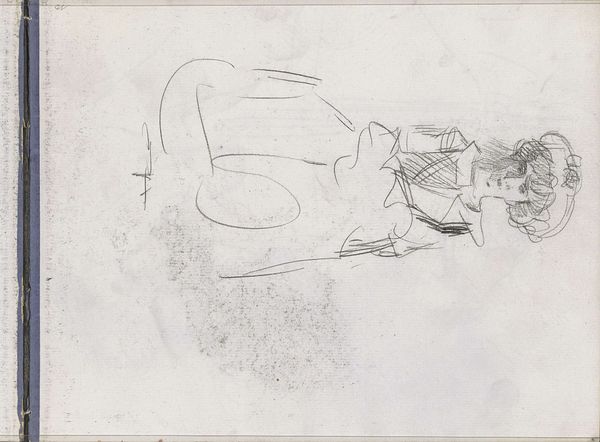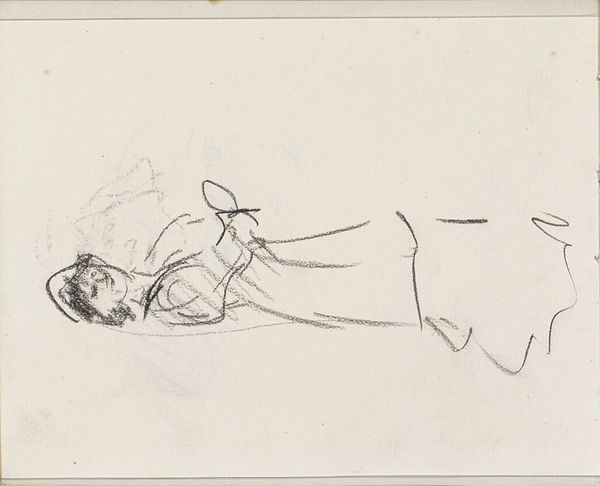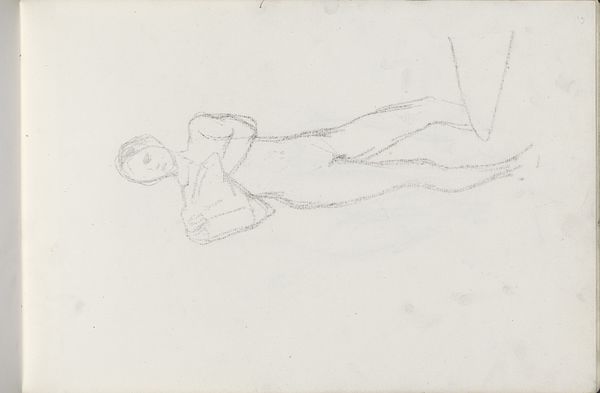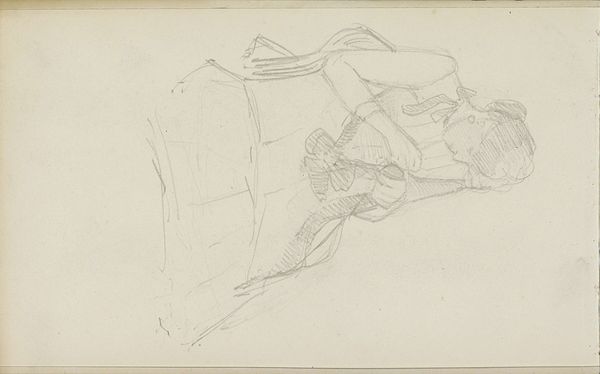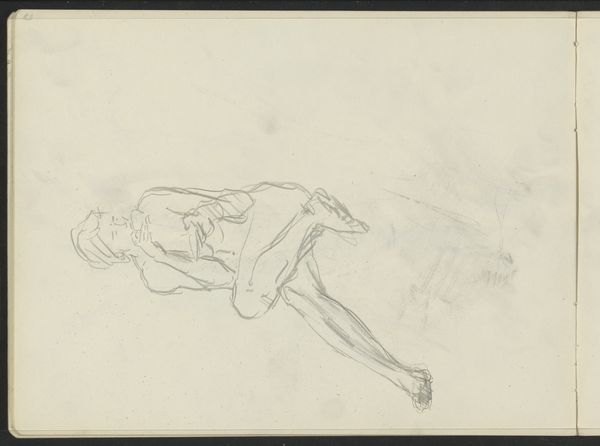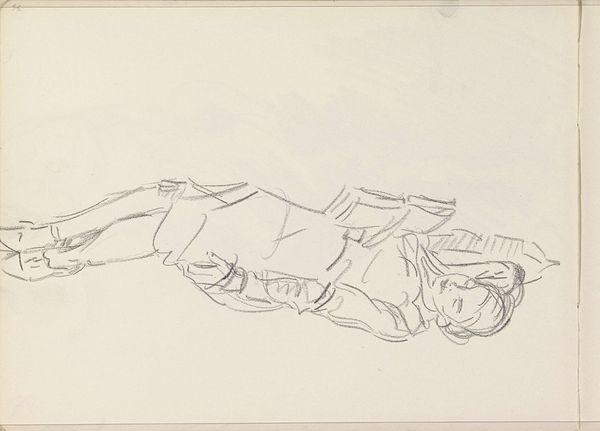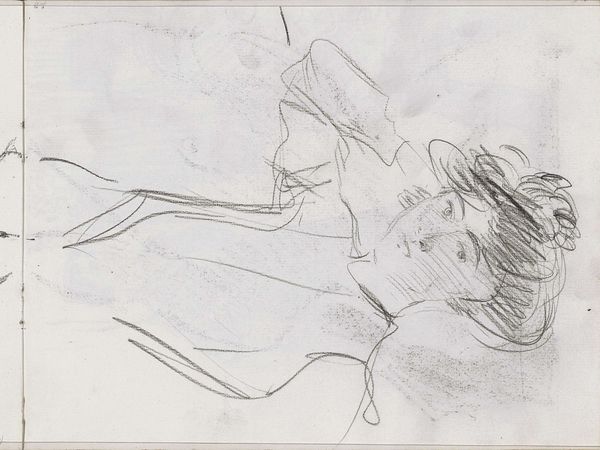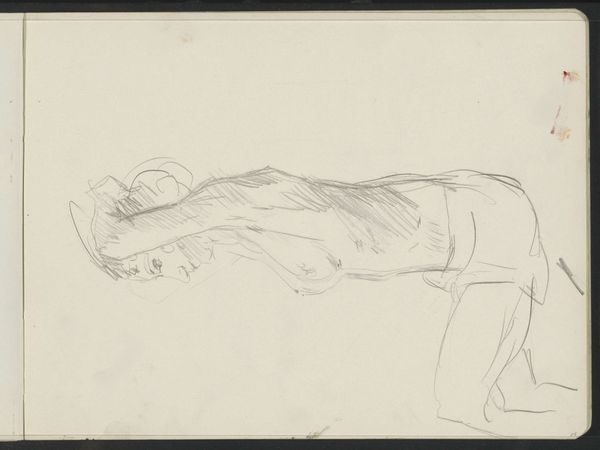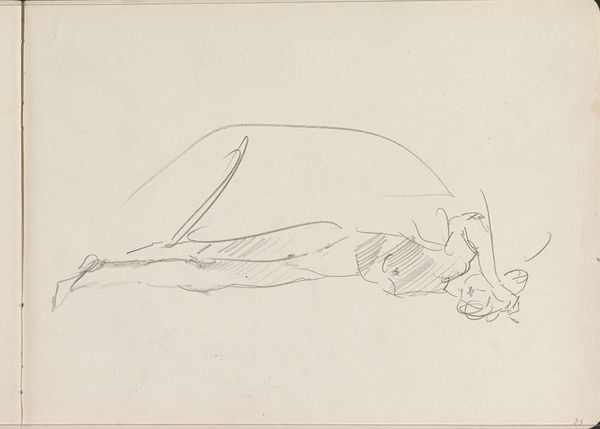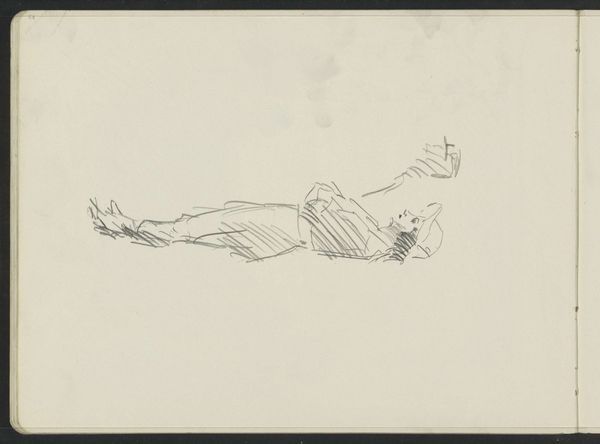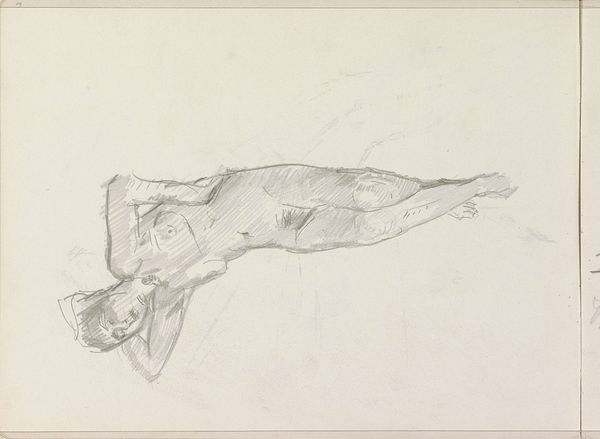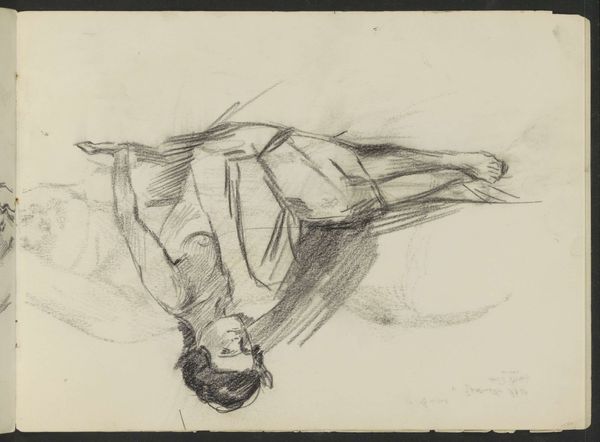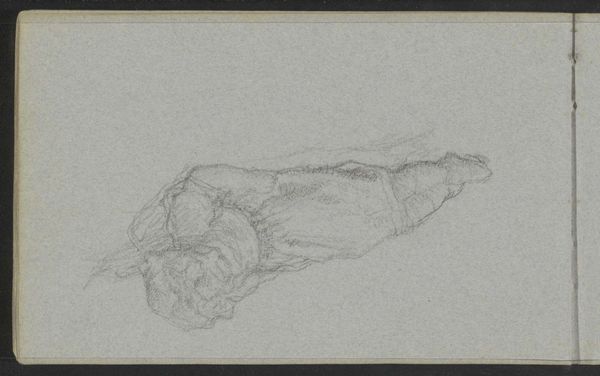
Copyright: Rijks Museum: Open Domain
This is a pencil drawing of a standing woman, seen from the back, by Isaac Israels. The averted gaze, the turned back, they speak to us of the human condition: the desire for intimacy and the simultaneous yearning for privacy. Consider the Rückenfigur, the figure seen from behind, a motif haunting art history. Caspar David Friedrich, a master of Romanticism, frequently employed this figure to invite the viewer to project themselves into the landscape, to contemplate the sublime. Here, Israels presents us with a Rückenfigur not amidst a grand vista, but within the quietude of an interior space. What does this suggest? Perhaps it is a reflection on the inner landscape, the solitary self. This intimate pose evokes a sense of vulnerability and introspection. We, the viewers, are positioned as silent observers, voyeurs into a moment of private reflection. It invites us to consider our own relationship with solitude and the complexities of human emotion. The motif continues to resonate, as artists explore themes of identity, alienation, and the search for meaning in our increasingly complex world.
Comments
No comments
Be the first to comment and join the conversation on the ultimate creative platform.
